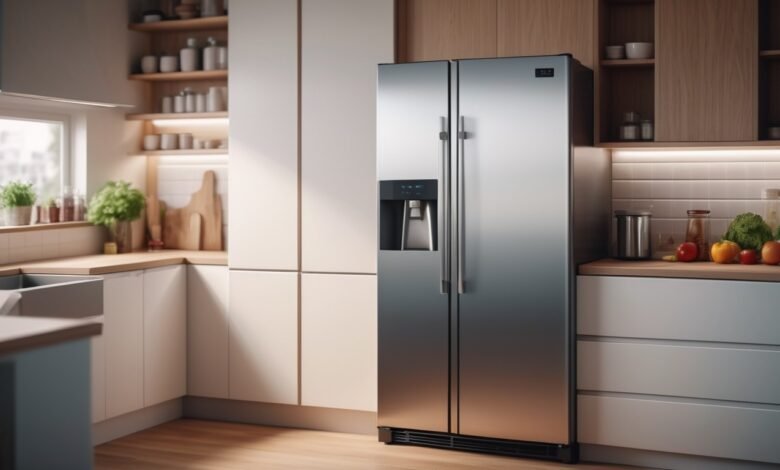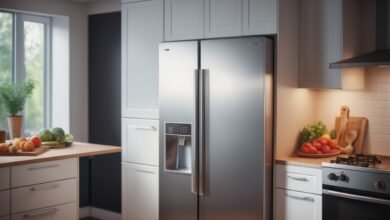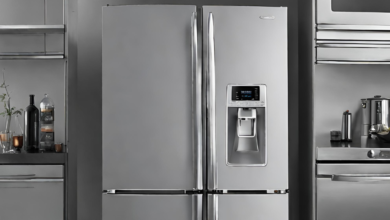Refrigerators with Integrated IoT Technology: Revolutionizing Cooling and Beyond

In the ever-evolving landscape of home appliances, refrigerators have undergone a remarkable transformation, thanks to the integration of Internet of Things (IoT) technology. These smart refrigerators, equipped with advanced connectivity features, are changing the way we interact with and manage our food storage. In this comprehensive blog, we will delve into the intricacies of refrigerators with integrated IoT technology, exploring their features, benefits, and the broader impact on our daily lives.
I. Understanding IoT in Refrigerators
A. Unveiling the IoT Concept
The Internet of Things refers to the interconnection of everyday devices to the internet, enabling them to send and receive data. In the context of refrigerators, this connectivity extends beyond conventional functions, transforming these appliances into intelligent hubs within our homes.
B. The Journey to Smart Fridges
The integration of IoT technology in refrigerators represents a natural progression from traditional cooling appliances. The journey involves the evolution of refrigeration mechanisms, the rise of smart homes, and the convergence of technology to create a more connected and convenient living experience.
II. Core Features of IoT-Enabled Refrigerators
A. Remote Monitoring and Control
1. Mobile Apps for Seamless Interaction
Refrigerators with integrated IoT technology come equipped with dedicated mobile applications. These apps enable users to remotely monitor and control various aspects of their fridge, providing real-time insights into temperature settings, energy consumption, and even the contents of the refrigerator.
2. Adjusting Temperature Settings on the Go
One of the standout features is the ability to adjust temperature settings remotely. Whether it’s lowering the temperature before loading groceries or setting specific zones for different types of food, users have unprecedented control over the cooling environment.
B. Inventory Management
1. Cameras for Visualizing Contents
IoT-enabled refrigerators often include interior cameras that capture images of the contents. These images are accessible through the mobile app, offering users a visual inventory of what’s inside. This feature proves invaluable for checking stock levels and making informed grocery shopping decisions.
2. Automated Shopping Lists
Building on the visual inventory, smart fridges can automatically generate shopping lists based on detected items and their expiration dates. This automated process simplifies the task of creating shopping lists, ensuring that essential items are never overlooked.
C. Energy Efficiency
1. Real-time Energy Consumption Monitoring
With IoT connectivity, users can monitor the energy consumption of their refrigerators in real-time. Detailed insights into energy usage patterns empower individuals to make informed decisions, contributing to a more sustainable and eco-friendly lifestyle.
2. Eco-Friendly Refrigerants
Many IoT-enabled refrigerators prioritize environmental sustainability by incorporating eco-friendly refrigerants. These refrigerants reduce the environmental impact while maintaining optimal cooling efficiency.
III. Connectivity Beyond the Kitchen
A. Smart Home Integration
1. Unified Smart Home Ecosystem
Refrigerators with integrated IoT technology seamlessly integrate with other smart home devices, creating a cohesive ecosystem. For instance, when the fridge detects low stock of a particular item, it can communicate with a smart home assistant to add the item to a digital shopping list.
2. Automation Scenarios
The integration extends to smart home automation scenarios. Users can set up personalized automation, such as dimming kitchen lights when the refrigerator door is closed or receiving notifications on other devices when the fridge requires attention.
B. Voice Control
1. Virtual Assistants at Your Service
Many IoT-enabled refrigerators support voice control through popular virtual assistants like Amazon Alexa and Google Assistant. This hands-free functionality allows users to check the status, add items to the shopping list, or adjust settings using simple voice commands.
2. Natural Language Processing Advancements
Advancements in natural language processing enhance the voice control experience. Users can interact with their refrigerators in a more conversational manner, asking complex questions or issuing detailed commands.
IV. Enhanced User Experience
A. Interactive Displays
1. Touchscreen Panels
Smart refrigerators often feature interactive touchscreen panels on the door. These panels serve as centralized hubs for controlling various functions, displaying recipes, and even streaming content. The intuitive interface enhances user experience, making the refrigerator a multifunctional device.
2. Notifications and Reminders
The interactive displays can show notifications and reminders, such as expiration dates, upcoming events, or maintenance alerts. This proactive approach helps users stay organized and ensures the freshness of their food items.
B. Smart Applications
1. Culinary Creativity with Recipe Suggestions
Built-in applications provide recipe suggestions based on the available ingredients in the refrigerator. Users can explore new culinary possibilities, making the cooking experience more creative and enjoyable.
2. Calendar Integration for Seamless Planning
Smart refrigerators often integrate with digital calendars, allowing users to keep track of important dates, appointments, and events. This integration adds another layer of convenience by centralizing information in a commonly accessed location.
V. Security and Privacy Considerations
A. Biometric Access
1. Fingerprint Recognition
To enhance security, some IoT-enabled refrigerators come equipped with biometric access control, such as fingerprint recognition. This ensures that only authorized individuals can access the contents of the refrigerator, adding an extra layer of privacy.
2. Privacy Controls
Manufacturers prioritize user privacy by implementing robust security measures and giving users control over data sharing settings. Users can manage permissions for different features, ensuring a secure and personalized experience.
VI. Future Trends and Innovations
A. Quantum Computing in Refrigeration
1. Optimized Energy Consumption
The integration of quantum computing in refrigeration systems holds the promise of further optimizing energy consumption. Quantum algorithms can analyze and process data at unprecedented speeds, leading to more efficient cooling processes.
2. Enhanced AI Capabilities
Quantum computing’s computational power can enhance AI capabilities, enabling IoT-enabled refrigerators to provide more accurate food recognition, personalized recommendations, and adaptive learning.
Conclusion
In conclusion, refrigerators with integrated IoT technology represent a paradigm shift in the world of home appliances. The fusion of IoT connectivity, advanced sensors, and artificial intelligence has elevated these essential kitchen devices into intelligent, proactive assistants. As these technologies continue to evolve, the future of IoT-enabled refrigerators holds exciting possibilities, promising not only increased efficiency and convenience but also a more sustainable and interconnected way of living. Embracing these innovations ensures that our kitchens become smart, responsive spaces that cater to our needs with precision and sophistication.






